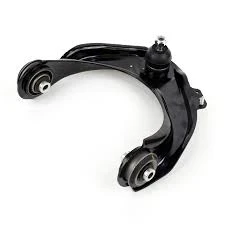lower control arm
Understanding the Lower Control Arm A Key Component in Vehicle Dynamics
The lower control arm (LCA) is a crucial part of a vehicle's suspension system, playing a significant role in maintaining wheel alignment and stability. Located at the front and sometimes the rear of the vehicle, the LCA connects the vehicle's chassis to the wheel hub. This article delves into the function, design, and importance of the lower control arm in automotive engineering.
Function of the Lower Control Arm
The primary purpose of the lower control arm is to facilitate the smooth movement of the vehicle's wheels while ensuring that they remain in contact with the road. By allowing for vertical movement, the LCA helps absorb shocks from road irregularities, enhances ride quality, and maintains tire contact during cornering and acceleration. This component effectively manages the forces that act on the suspension system, allowing for optimal handling and performance.
In conjunction with other suspension parts like the upper control arm and shock absorber, the LCA forms a triangle that provides stability to the vehicle. This triangular arrangement ensures that when the wheels encounter bumps or dips, they can move up and down while still being properly aligned. Without a well-designed lower control arm, a vehicle would experience poor handling, increased tire wear, and compromised safety.
Design and Material
Lower control arms are typically made from strong metals like steel or aluminum. Steel is favored for its durability and ability to withstand heavy loads, while aluminum is chosen for its lightweight properties, which help in improving fuel efficiency and reducing overall vehicle weight. Some high-performance or luxury vehicles may even use composite materials to achieve a balance between strength and weight.
lower control arm

The design of an LCA can vary significantly based on the vehicle’s intended use and design. Common configurations include stamped, cast, or forged designs. Stamped control arms are lighter and cost-effective, while cast or forged arms provide superior strength and durability, making them suitable for performance cars or heavy-duty applications. Additionally, adjustable control arms are available in some aftermarket scenarios, allowing for changes in the vehicle’s suspension geometry to optimize handling for specific driving conditions.
Importance in Vehicle Dynamics
The lower control arm is vital not only for comfort but also for vehicle dynamics. It contributes to the handling characteristics of a vehicle, impacting how it corners and responds to driver inputs. A well-designed lower control arm can enhance steering precision, making the car feel more responsive and agile. Conversely, a worn or damaged lower control arm can lead to alignment issues, causing excessive tire wear, unpredictable handling, and a decrease in overall safety.
Regular maintenance is essential for the longevity and performance of lower control arms. Signs of wear may include clunking noises during turns, uneven tire wear, and poor alignment. Drivers should pay attention to these indications and consult a mechanic for inspection or replacement if needed.
Conclusion
In summary, the lower control arm is an integral component of a vehicle’s suspension system, responsible for ensuring stability, safety, and comfort. Its design and material choice significantly affect vehicle performance and handling. For both automotive enthusiasts and everyday drivers, understanding the lower control arm's function and importance can lead to better maintenance practices and informed decisions regarding vehicle modifications. Ultimately, a well-maintained lower control arm contributes to a safer and more enjoyable driving experience.









